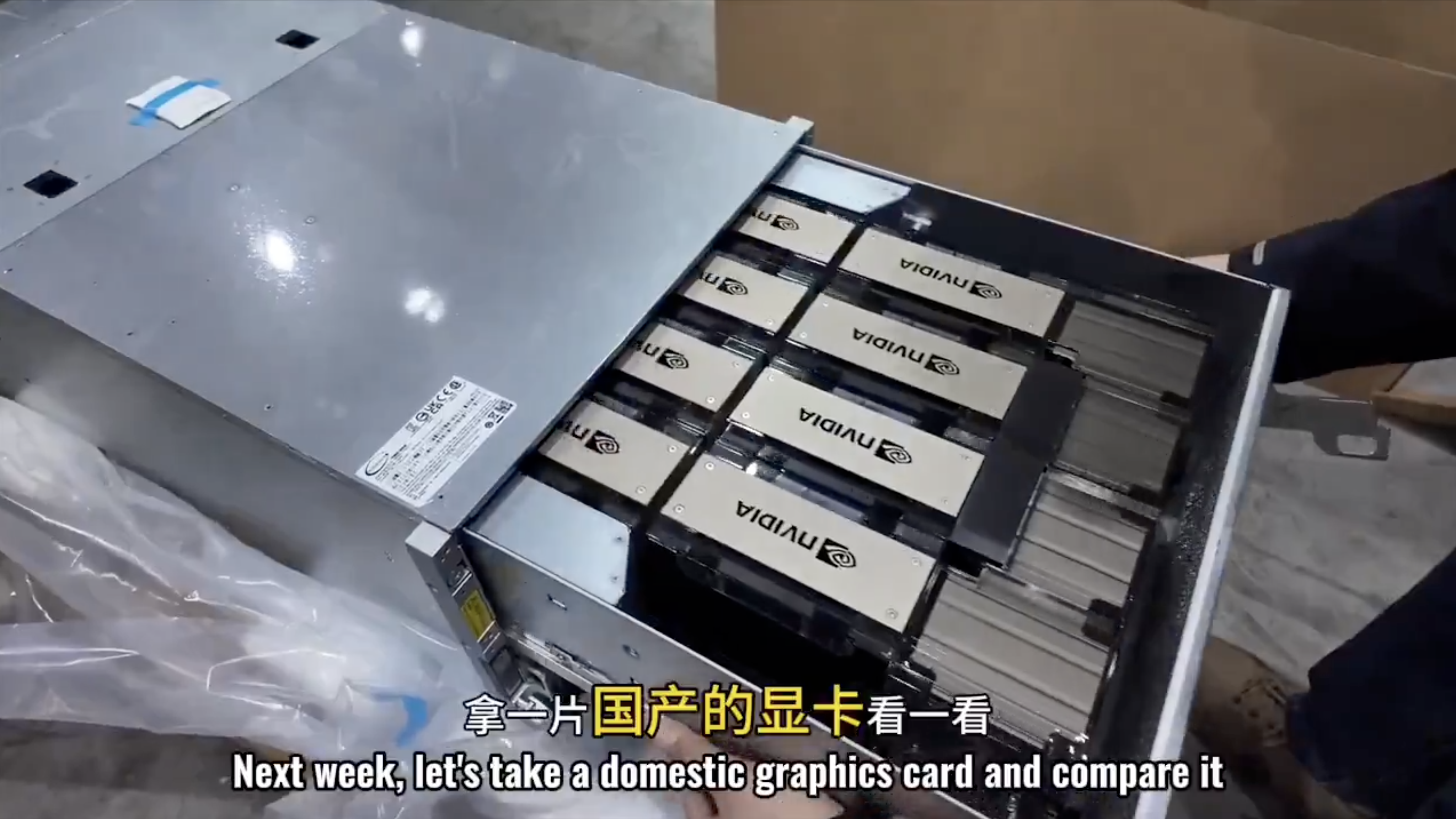Chinese businessman shows off sanctions-busting NVIDIA AI GPUs he bought despite US ban — 200 H200 GPUs skid past US sanctions

Without obtaining an export license from the U.S. Department of Commerce, Nvidia cannot supply its high-end H100 and the latest H200 GPUs to China-based entities. This license will hardly be granted, at least not for hundreds of such GPUs. However, these GPUs are seemingly available in China, with one alleged businessman bragging that he had smuggled in over two dozen H200-based Supermicro servers with hundreds of H200 GPUs inside.
The unidentified businessman allegedly obtained as many as 25 Supermicro servers, each with eight Nvidia H200 GPUs, amounting to 200 Hopper GPUs. Two hundred H200 GPUs are not enough to train a sophisticated large language model, but they are good enough to conduct research by various research institutions and develop software at a startup. Companies can start developing their projects on smuggled H200 hardware and then run them in a remote cloud data center, again violating U.S. sanctions against China.
Due to overwhelming demand, Nvidia's H200 GPUs with 141GB of HBM3 memory are difficult to obtain. For example, a difficult-to-obtain H200 server can be obtained from a few U.S.-based companies. However, the estimated availability time is four to six weeks, and the price is never published. A baseboard with eight H200 GPUs in Europe can be ordered for $273,000, excluding VAT. A fully equipped H200 server probably costs north of $300,000.
A Chinese businessman shows off his newly acquired NVIDIA GPUs, even under the U.S. ban."It is indeed illegal, but violates the U.S. law. Trump will be furious about it, right?" pic.twitter.com/ADLfM8l7YIDecember 10, 2024
Despite U.S. restrictions that block China-based entities from acquiring advanced data center AI and HPC processors, a network of buyers, sellers, and couriers is circumventing these export controls on Nvidia GPUs. As of this past August, over 70 distributors openly marketed these restricted processors online, with many offering delivery of separate GPUs or even servers within weeks.
Nvidia supplies its H100 and H200 processors to companies like Dell, HPE, and Supermicro, which build and sell AI servers. These firms may order surplus processors, which can end up in unofficial channels. While all companies claim to follow U.S. export controls and address illicit activity when and if discovered, their sales to smaller resellers can escape their oversight and end up in smuggling networks.
Smuggling in a processor about the size of a Nintendo Switch from Singapore or South Korea to China is relatively easy, even without a sophisticated network. Another thing is transporting a server that weighs tens of kilograms to the People's Republic. However, smuggling batches of 8-way Nvidia H200 machines indicates a perfectly working distribution system.
Since we are dealing with Supermicro machines, we can only conclude that even after the U.S. government started a probe into Supermicro for alleged violations of sanctions against China and Russia, the company's AI and HPC servers based on restricted Nvidia processors continue to be shipped to China in mass quantities, possibly through various intermediaries willing to profit from hardware that cannot legally be supplied to the vast majority of Chinese entities.
Get Tom's Hardware's best news and in-depth reviews, straight to your inbox.

Anton Shilov is a contributing writer at Tom’s Hardware. Over the past couple of decades, he has covered everything from CPUs and GPUs to supercomputers and from modern process technologies and latest fab tools to high-tech industry trends.
-
pug_s Sanctions will hurt Nvidia and Supermicro in the long run. People like this guy will smuggle 'banned' tech in the short run while making replacements for them in the long run.Reply -
uplink-svk Highest bidder always wins. Nvidia and SM is selling to Russia for 100%, it just didn't leak out...yet. Money doesn't stink to anyone...Reply -
abufrejoval I just don't see how importing these systems into China should be difficult at all.Reply
Just which Chinese customs official would ever want to block them?
And I can't imagine US customs being stationed anywhere closer than the North Phillipine Sea.
Getting them exported to China might be another matter, but it's so easy to get lost on the high seas, especially when the entire Pacific is all of a sudden Chinese.
And if you then wind up in a strange port where people are willing to pay double for your cargo, that's an outcome few seamen are inclined to refuse. -
phead128 Replyabufrejoval said:I just don't see how importing these systems into China should be difficult at all.
Just which Chinese customs official would ever want to block them?
And I can't imagine US customs being stationed anywhere closer than the North Phillipine Sea.
Getting them exported to China might be another matter, but it's so easy to get lost on the high seas, especially when the entire Pacific is all of a sudden Chinese.
And if you then wind up in a strange port where people are willing to pay double for your cargo, that's an outcome few seamen are inclined to refuse.
Apparently you only need a few thousand smuggled H100 GPUs to make a relatively advanced LLM model.
If China’s military and its commercial affiliates are able to smuggle just 3,500 of Nvidia’s cutting-edge H100 AI chips—0.25 percent of the 1.5 million that the company is expected to ship in 2024—China’s military would be able to train a relatively advanced large language model in only 11 minutes.https://www.foreignaffairs.com/china/limits-china-chip-ban